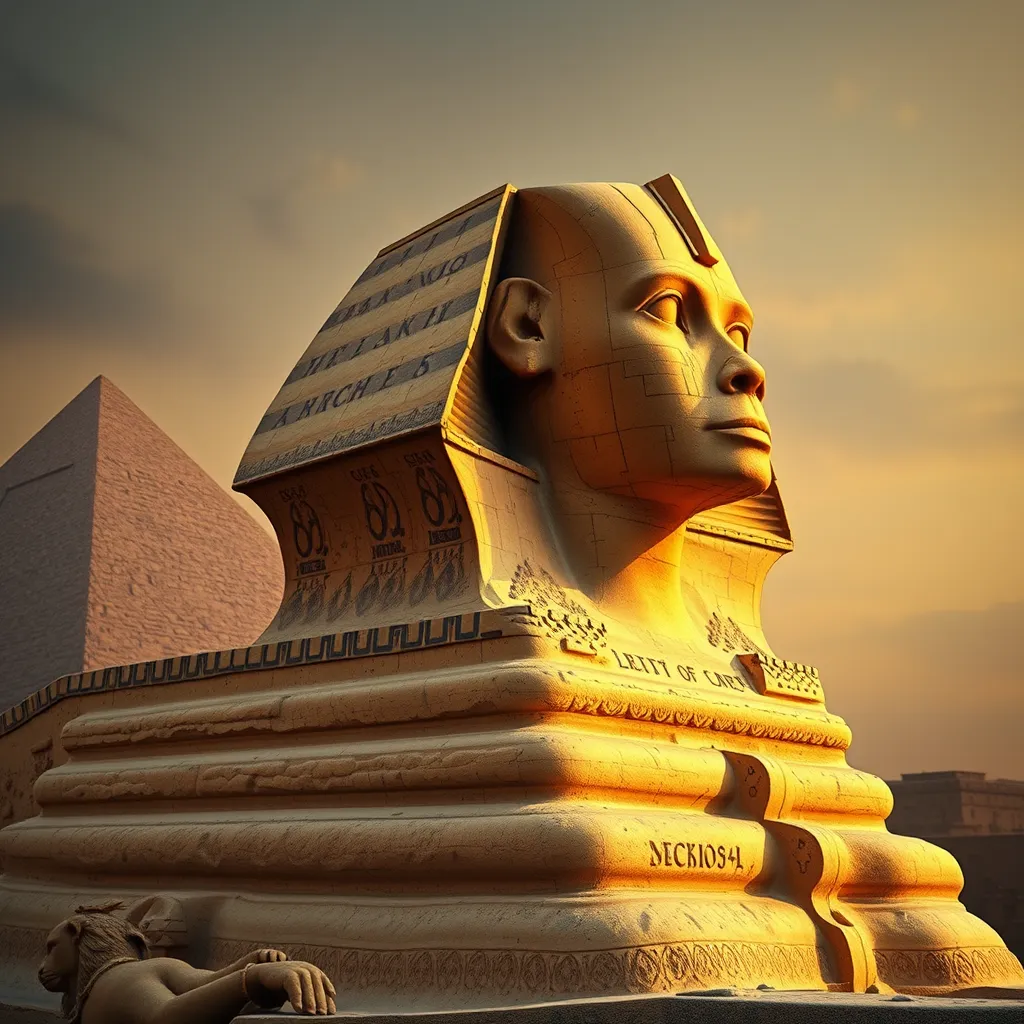The Great Sphinx of Giza: A Guardian of the Pharaohs
I. Introduction
The Great Sphinx of Giza is one of the most iconic monuments of ancient Egypt, embodying the grandeur and mystery of this ancient civilization. With its massive limestone body and the head of a human, the Sphinx stands sentinel over the Giza plateau, captivating visitors for millennia.
In ancient Egyptian culture, the Sphinx held great significance, symbolizing strength, wisdom, and protection. It was believed to serve as a guardian of the pharaohs’ tombs, ensuring their safe passage into the afterlife. This article aims to explore the historical, architectural, and cultural significance of the Great Sphinx, as well as the challenges it faces in modern times.
II. Historical Context
The Sphinx was constructed during the Old Kingdom of Egypt, a period characterized by the flourishing of art, architecture, and centralized power. This era, spanning from approximately 2686 to 2181 BCE, saw the establishment of monumental structures that would define Egypt’s landscape.
Pharaoh Khafre, the builder of the second pyramid at Giza, is credited with the construction of the Sphinx. It is believed that he commissioned the statue as part of his mortuary complex, aligning it with the nearby pyramids to enhance its symbolic representation of power and divinity.
The relationship between the Sphinx and the Pyramids of Giza is integral, as they all form part of a larger funerary complex. The Sphinx is strategically positioned to watch over the pyramids, reinforcing its role as a protective figure for the pharaohs buried within them.
III. Architectural Marvel
The Great Sphinx is an architectural marvel, measuring approximately 73 meters (240 feet) long and 20 meters (66 feet) high. Its immense size and intricate details make it one of the largest and most recognizable sculptures in the world.
Constructed from local limestone, the Sphinx was carved directly from the bedrock of the Giza plateau. The careful craftsmanship and attention to detail exemplify the skill of ancient Egyptian artisans.
When compared to other monumental sculptures, such as the Colossus of Rhodes or the Statue of Zeus at Olympia, the Sphinx stands out due to its unique combination of human and animal features, representing the ideal fusion of strength and intelligence.
IV. Symbolism and Meaning
The Sphinx symbolizes strength and wisdom, embodying the ideal qualities of a ruler in ancient Egypt. Its lion’s body represents power, while the human head signifies intelligence and thoughtfulness.
Additionally, the Sphinx has a deep connection to the sun god Ra. In ancient Egyptian mythology, the Sphinx was thought to protect the pharaohs as they journeyed to the afterlife, aligning with the belief that the sun’s journey across the sky mirrored the cycle of life and death.
As a protector of tombs and sacred sites, the Sphinx serves as a sentinel, guarding the resting places of the pharaohs and ensuring their safe passage into eternity.
V. Conservation and Restoration Efforts
Throughout history, the Great Sphinx has faced numerous challenges related to preservation. Natural erosion, pollution, and human intervention have all taken a toll on this ancient monument.
Key restoration projects have been undertaken over the years to address these issues. Notable efforts include:
- The restoration of the Sphinx’s nose, which was damaged in the 14th century.
- Consolidation of the stone to prevent further erosion.
- Regular cleaning and maintenance to address pollution damage.
Modern techniques in conservation, such as 3D scanning and digital modeling, are now employed to monitor the Sphinx’s condition and to plan for future restoration efforts effectively.
VI. Myths and Legends
The Great Sphinx has inspired many myths and legends throughout history. Ancient Egyptians revered it as a divine protector, weaving tales of its origins and powers.
Moreover, the riddle of the Sphinx, as told in Greek mythology, adds another layer to its mystique. In the myth, the Sphinx posed a riddle to travelers, devouring those who could not answer. This narrative emphasizes themes of intellect and the consequences of ignorance.
In modern times, the Sphinx continues to capture the imagination, appearing in various cultural references, literature, and films, serving as a symbol of mystery and enigma.
VII. Tourism and Cultural Impact
The Great Sphinx of Giza is a global landmark, attracting millions of tourists each year. Its iconic status boosts Egypt’s tourism sector significantly, contributing to the local and national economy.
The economic impact of tourism on Giza includes:
- Job creation in hospitality and related industries.
- Revenue generation for local businesses.
- Funding for conservation and archaeological efforts.
Furthermore, the Sphinx plays a vital role in promoting Egyptian heritage and history, serving as a gateway for people worldwide to learn about the rich cultural legacy of ancient Egypt.
VIII. Conclusion
In summary, the Great Sphinx of Giza is not merely a monumental statue; it is a symbol of ancient Egyptian civilization, embodying the strength, wisdom, and spiritual beliefs of a bygone era. Its historical significance, architectural grandeur, and cultural impact resonate through time, making it an enduring legacy.
As we reflect on the importance of the Sphinx, it becomes clear that preserving this ancient monument is crucial for future generations. By appreciating and protecting the Sphinx, we honor the legacy of the pharaohs and the rich tapestry of human history it represents.



